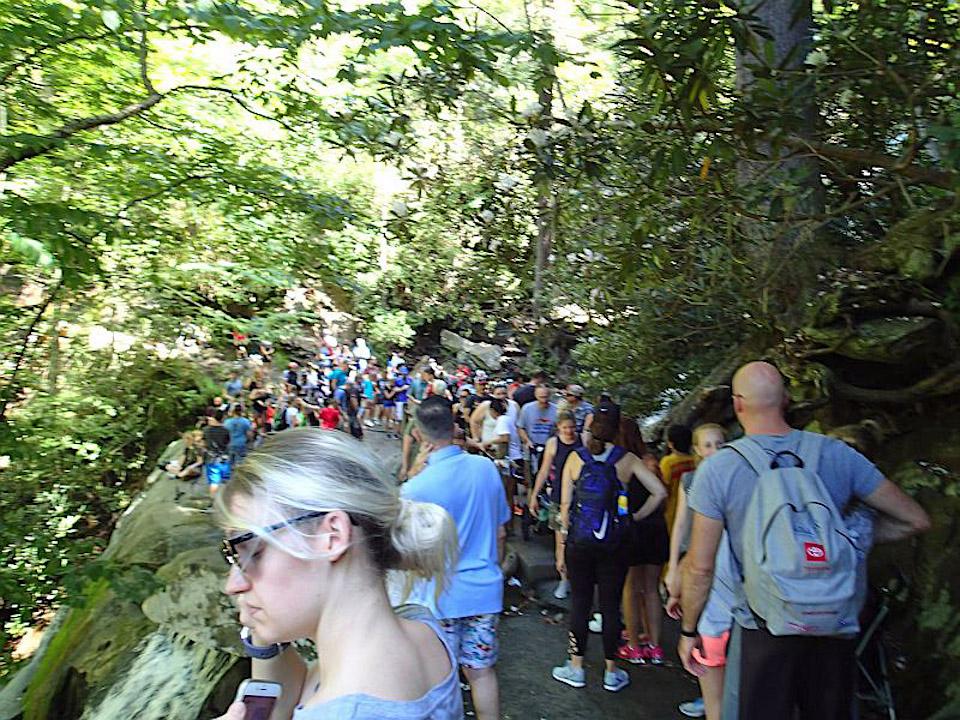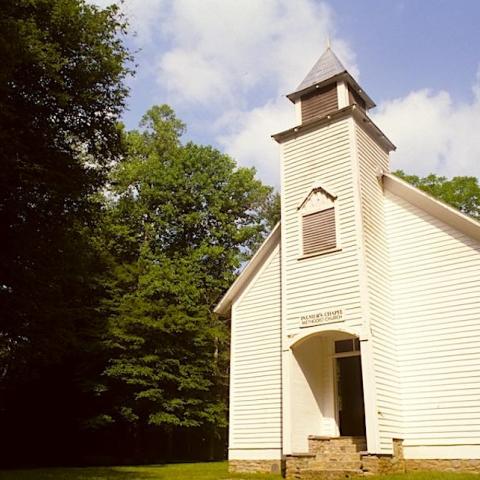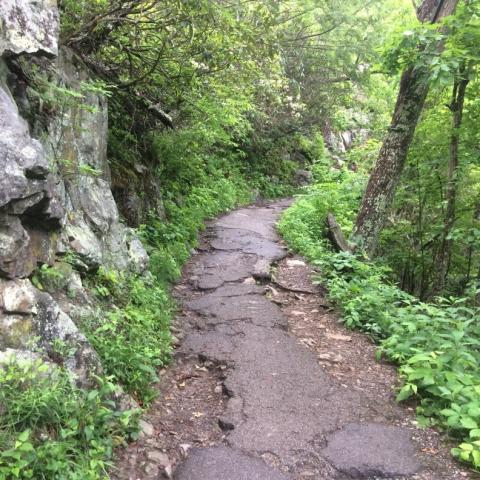
On the trail to Laurel Falls in Great Smoky Mountains National Park in July 2019/NPS
How many visitors per year can Great Smoky Mountains National Park comfortably handle? That's a good question in light of the record 12.5 million visitors the park that straddles the North Carolina-Tennessee border welcomed in 2019.
“I am very proud of our employees who work hard each day, along with our volunteers and partners, to help provide outstanding visitor experiences and to protect the resources that people come here to enjoy,” said Superintendent Cassius Cash. “With growing visitation, this has become more challenging. In 2020, we’ll be inviting people to help us thoughtfully look at how we can improve access and continue caring for this very special place.”
Last year's visitation tally of 12,547,743 was 1,126,540 more visitors than in 2018. The park’s three primary entrances near Gatlinburg, Townsend, and Cherokee all had increased use, accounting for about two-thirds of the total park visitation. Secondary park entrances experienced tremendous growth, due primarily to the new section of the Foothills Parkway between Walland and Wears Valley. More than 1 million visitors enjoyed this new scenic driving experience, a park release said.
Monthly visitation records last year were set during January, March, April, May, June, and December. In both April and May, approximately one million people visited. Before 2015, park visitation had not exceeded one million visitors per month until the summer and fall months.
Another traditional shoulder season month, September, has now exceeded one million visitors since 2015. Visitors are more consistently reporting traffic congestion, busy restrooms, and over-full parking areas throughout the year. These are some of the issues the park will be exploring over the next year in an effort to provide better access, experiences, and stewardship of the park.




 Support Essential Coverage of Essential Places
Support Essential Coverage of Essential Places







Comments
At what point and time does it make sense to charge an entrance fee? I understand that the Newfound Gap Road is to remain free (unless action is taken by the Tennessee Legislature), but every major off section like Cades Cove and Clingmans Dome should have an entrance station. I don't believe this would deter visitors much, but rather would provide much needed funding for the park and the NPS as a whole. If I'm paying $25-30 to enter nearly every other major park in the country, why is GSMNP still free and sucking up a significant portion of the NPS budget when they have the ability to capitalize on that traffic? And then people complain about the backlogs of work needed to be done...
They actually arent allowed to charge a fee. In the land Grant's that helped form the park part of that was an agreement it be free and open to the public or some such wording. Ibhad talked to a ranger in my visit some years back and asked her to make sure I didnt miss the entrance fee in some way.
It is uncontested that the park receives millions of visitors. But, it should also be noted that the high visitation count is largely due to the transitting through the park by travelers and commuters on the the Foothills Parkway, Gatlinburg Spur, and Highway 441. This traffic does impact the park in road maintenance, law enforcement, and other costs, but they are not recreation visitors in the sense that they hike, camp, fish, or otherwise engage in what is typically thought of as recreation use. The only reason the NPS is allowed to count these travelers as visitors is because the park maintains the road. There are many other national park areas that have simlar through roads that traverse large sections of their parks but they are not allowed to count the transits as visitors because the parks do not maintain these roads. Some examples are Indiana Dunes National Park (US highway 12), Santa Monica Mountains NRA (U.S. Highway 1), Big Cypress (I-75), and North Cascades NP (U.S. 20). Counting the number of parking spaces located in Great Smoky Mountains NP and dividing by the reported visitation easily shows that there are not 12.5 million people parking somewhere in the park and using the park facilities each year.
You are absolutely correct. Although there are millions that drive this Newfound Gap road annually, very few of them ever step out of the vehicle. The backcountry remains virtually empty and photographs like the one in this article are misleading. It's like a trail right out of Gatlinburg. Most trails are totally empty. So the NPS is using vehicle drive through data to drum up support for an entrance fee. There really isn't any other way to get from NC to TN unloess you go around i 40 through Waynesville. And that is very out of the way. I am proud to be a Tennesseean who is descended of smart folks who anticipated this entrance fee scheme by the NPS. It is deed restricted and hopefully will remain so, despite their lobbying attempts to get it changed. And Lamar Alexander, who has personally profited from his business dealings with a private resort within the park, is all for having people pay. But we just saw the true strength of his character this week when he sold his soul for Donald Trump in the impeachment witness block. Crooked, career politicians who are self-dealing with public lands.
I have been hiking the Alum Cave trail to LeConte Lodge for nearly three decades, 1-3 times a year for most years. It is perhaps less busy now that in the 90's - at least that is my perception, once you get more than a couple hundred yards from the trailhead. But driving to the trailhead? Yeesh, that takes much longer.
And then they want up "upghrade" the campgrounds with electricity, showers, etc. Leave them alone! If you need electricity that bad, stay home! It appears that the money could be spent better in other polkaces. And for what reason are we trying to attract more people (ie: campers)
North Cascades NP itself is not allowed to count Washington 20 traffic but its co-managed unit of Ross Lake NRA can and does (and reports nearly a million visitors per year).